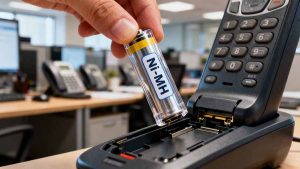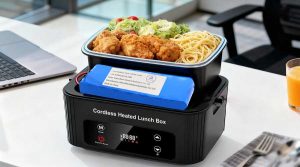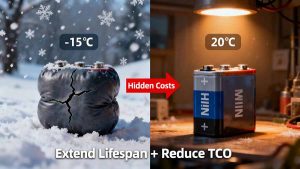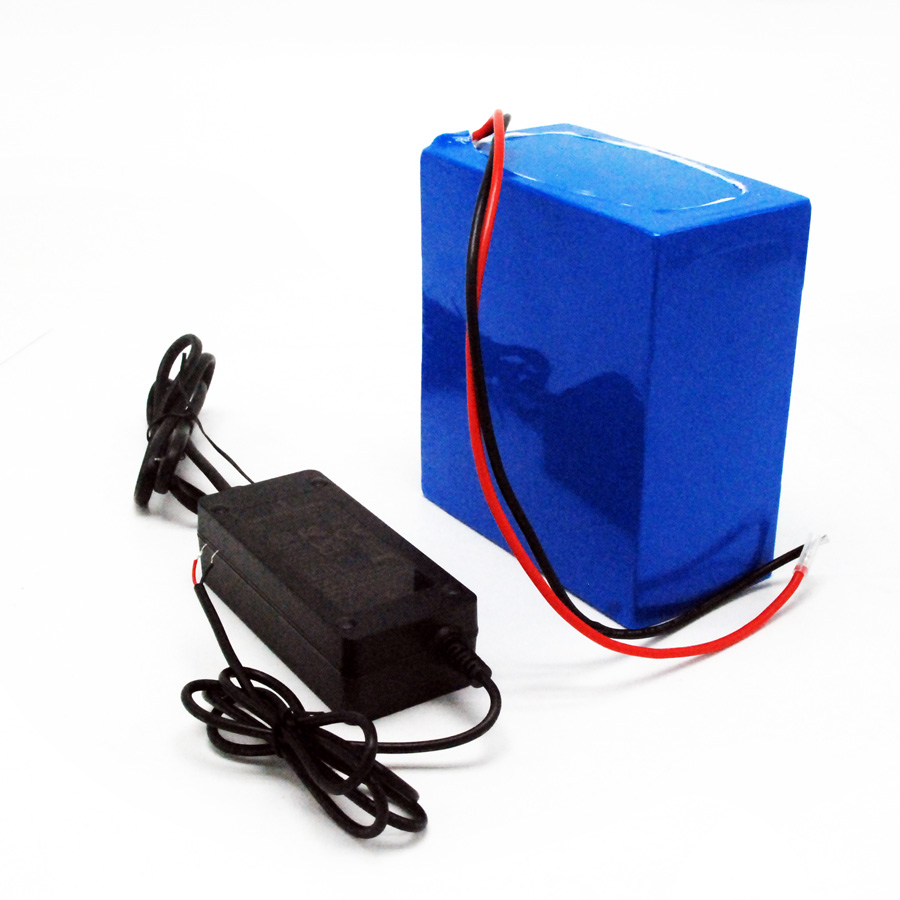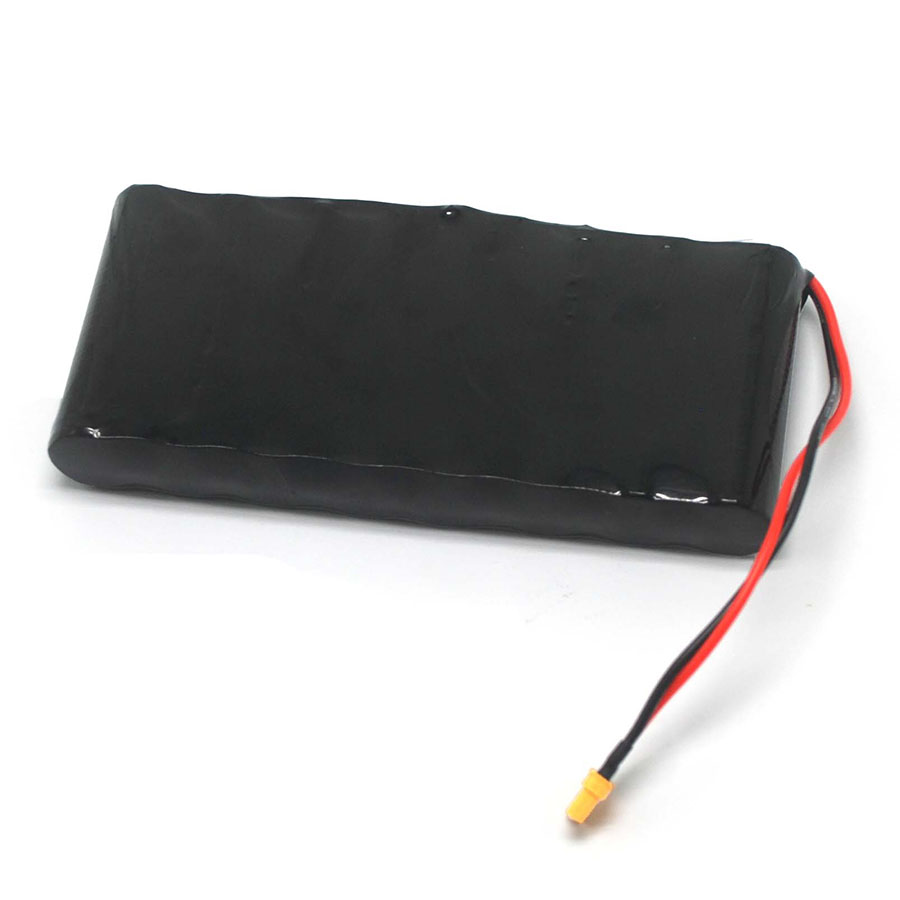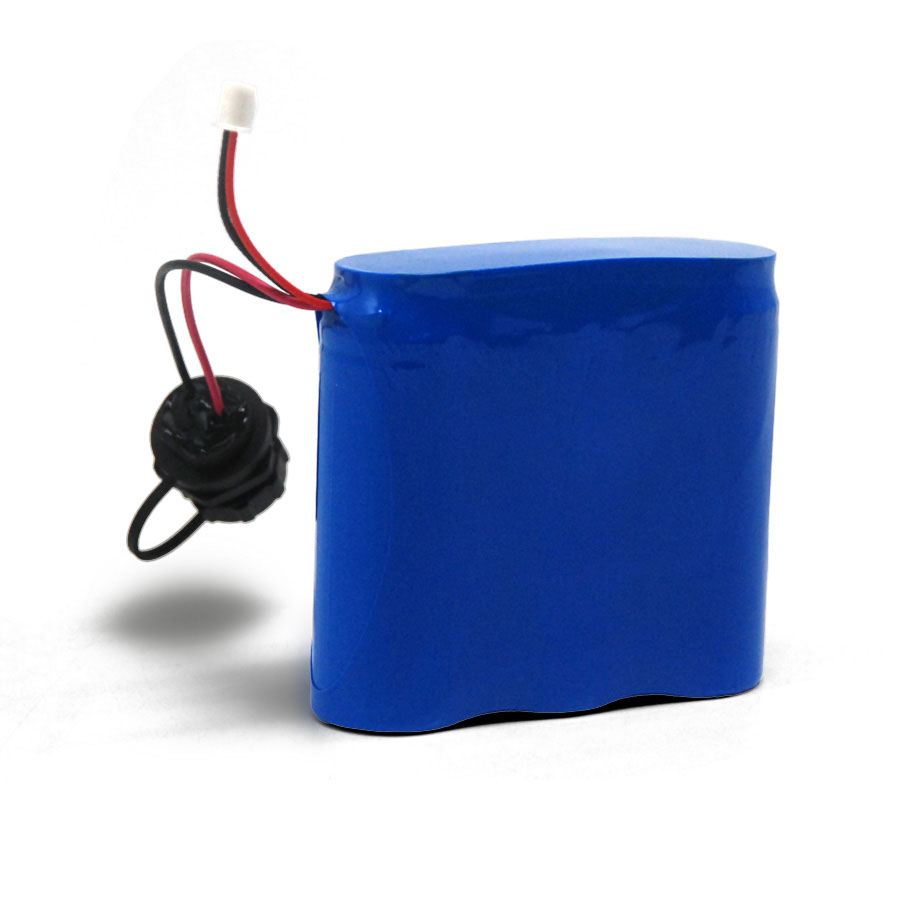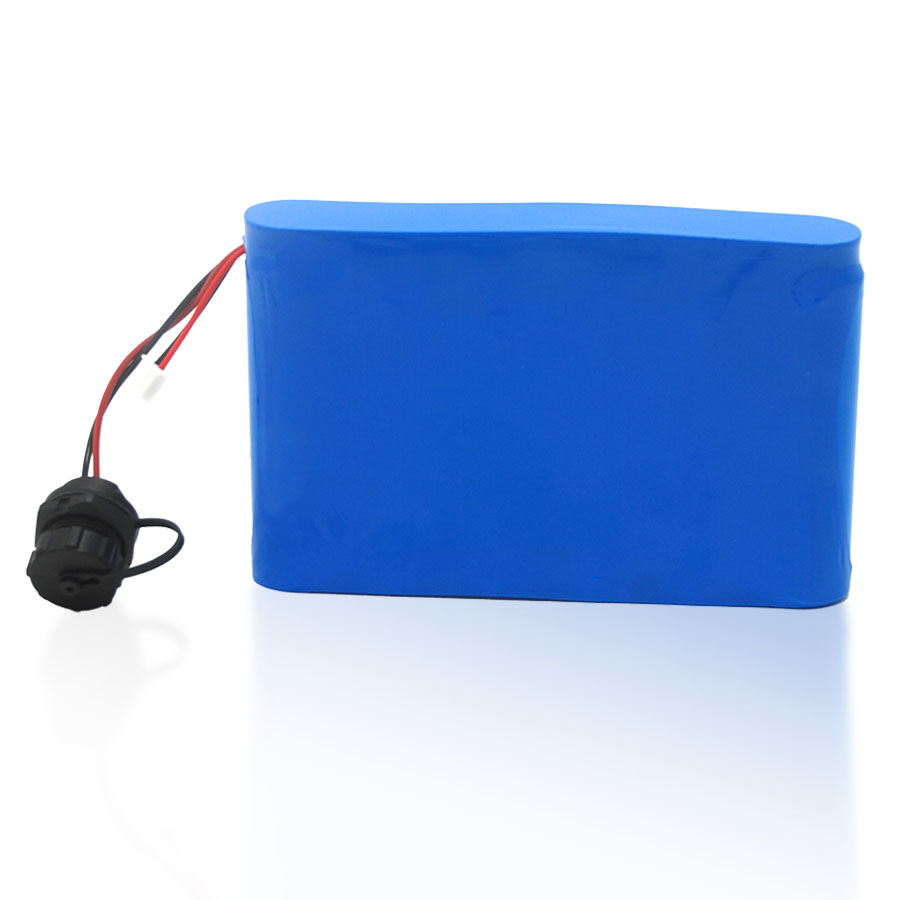Introduction: The Rise of the 7.4V Battery
If you’ve ever found yourself soldering tiny connectors onto a board-level drone or rummaging through a handful of portable gadgets, chances are good you’ve encountered a “7.4V battery.” For years, this voltage—stemming from two LiPo (Lithium Polymer) cells in series—has been the sweet spot for devices that demand a balance of light weight, compact size, and robust performance. From pocket-sized FPV drones to handheld medical monitors, the 7.4V battery has quietly powered innovation across countless fields.
At Himax Battery, we’ve spent thousands of hours engineering and producing custom lithium-based solutions, and the 7.4V LiPo format is a particular favorite. In this guide, we’ll draw on real-world examples, technical insights, and practical tips to help you understand why a high-quality 7.4V battery—whether it’s a 600mAh micro pack or a 3600mAh powerhouse—can elevate your next project. Along the way, you’ll see how Himax’s tailored design services ensure that, whatever your requirements, your 7.4V battery won’t just work—it’ll excel.

1. Understanding the 7.4V Battery: Anatomy & Advantages
Before diving into specific capacities and use cases, let’s unpack why the 7.4V battery has become a staple in portable electronics and hobbyist communities.
1.1 Why 7.4V? The 2S LiPo Configuration
· Two Cells in Series (2S): Each LiPo cell has a nominal voltage of around 3.7V. By placing two cells in series, you get a combined nominal voltage of 7.4V (often peaking at 8.4V when fully charged). This 7.4V range matches the input requirements of many devices—especially those originally designed around “12V” lead-acid or NiMH packs, but where reduced weight is critical.
· Stable Discharge Curve: LiPo chemistry holds its voltage tightly under load. A 2S LiPo will keep you near 7.4V for most of its discharge cycle (dropping slowly toward 6V near the end), allowing electronics to run predictably longer.
· Compact Footprint: Compared to similarly rated cylindrical cells (e.g., 18650s), a 2S LiPo pouch can be shaped to fit odd spaces—ideal for tightly packaged drones, custom RC frames, or handheld diagnostic tools.
1.2 Key Benefits of 7.4V LiPo vs. Other Formats
· Weight Savings: Traditional 7.2V NiMH packs or 6V SLA batteries often weigh 2–3 times as much as a 7.4V LiPo of similar capacity. If you’ve ever hoisted a drone only to feel disappointed by its sluggish flight, a lightweight 7.4V battery can make all the difference.
· High Discharge Capability: LiPo batteries are renowned for their ability to supply high current bursts relative to their size. A “15C” 7.4V 1300mAh LiPo, for instance, can deliver short bursts of nearly 20 amps—enough to power racing drones, high-torque servos, or even high-performance LED arrays without sagging.
· Modular Scalability: You can parallel multiple 2S LiPo packs to bump capacity (e.g., two 1300mAh packs in parallel become 2600mAh at 7.4V) or series-stack them for higher voltage (though for pure 7.4V applications, series isn’t typically needed). This flexibility lets you design precisely for runtime and current requirements.
· Low Self-Discharge: Compared to NiMH cells (which lose about 10% of capacity per month), LiPo batteries can retain over 90% of their charge even after weeks of storage. That’s a huge plus for seasonal hobbyists or spare-battery systems.
2. Popular Capacities & Real-World Use Cases
Below, we’ll explore four widely used 7.4V battery capacities—600mAh, 900mAh, 1300mAh (15C), and 3600mAh—and share insights into when and why each makes sense. Real examples will illustrate how these packs power everyday devices and specialized gear alike.
2.1 7.4V 600mAh LiPo: Micro-Scale Mobility
2.1.1 Product Highlights
· Capacity: 600mAh (0.6Ah)
· Form Factor: Ultra-thin pouch, typically around 60×23×42mm
· Nominal Voltage: 7.4V (8.4V when fully charged)
· Typical Discharge Rate: 1C–2C (0.6–1.2A continuous)
· Weight: ~25g–30g
2.1.2 Ideal Applications
1. Nano/Toothpick FPV Drones
O These tiny 65mm-to-80mm frame quadcopters often rely on a 7.4V 600mAh LiPo to keep weight under 30g. Even at a modest 2C discharge (1.2A), they get surprisingly zippy flight times of 3–4 minutes—enough for freestyle tricks and obstacle runs.
- Wearable Prototypes & IoT Probes
O For designers making a proof-of-concept wearable sensor, a small 7.4V 600mAh pack can fit snugly into a wristband enclosure or a chest-strap housing, providing enough juice for Bluetooth or Wi-Fi modules and small microcontroller loads.
- Mini GPS Trackers
O Pet-tracking collars and child safety tags often demand a lightweight, thin battery that can handle periodic GPS bursts—7.4V 600mAh LiPos strike that perfect balance, powering a GPS/MQTT radio for hours before a recharge.
Case in point:
A drone-hobbyist friend of ours needed a tight-fitting battery for his 75mm brushless quad—he tried a 7.4V 450mAh pack first, but runtime was barely two minutes. Upgrading to a 7.4V 600mAh LiPo (Himax-customized dimensions) added a full minute of flight while allowing him to cram it under a sleek 3D-printed canopy. Tiny changes, big gains.
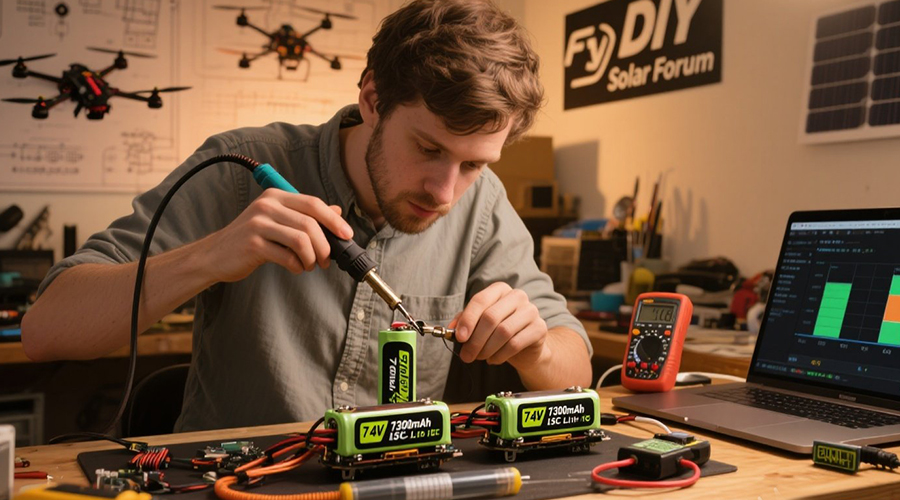
2.2 7.4V 900mAh LiPo: Mid-Range Versatility
2.2.1 Product Highlights
· Capacity: 900mAh (0.9Ah)
· Form Factor: Slightly larger pouch, ~31×37×37mm profile
· Discharge Rate: Usually 10C–15C options available (9–13.5A bursts)
· Weight: ~45g–50g
2.2.2 Ideal Applications
1. Lightweight RC Cars & Boats
A 7.4V 900mAh 15C LiPo can supply up to 13.5A bursts—plenty for a 1/18 scale RC car or a small brushless boat motor. Drivers appreciate stable throttle response without excessive voltage sag.
- Handheld LED Floodlights
Photographers often pack 7.4V 900mAh packs into a custom LED panel housing—900mAh gives them 30–40 minutes of high-output illumination at full brightness. Since LiPo voltage stays nearly flat until the last 1.5V, the light doesn’t dim prematurely.
- FPV Goggles or Telemetry Modules
Some FPV pilots power their analog video goggles with a 7.4V 900mAh LiPo strapped inside the headgear, enjoying 4–5 hours of continuous use. Telemetry radios (TMODE, TBS Crossfire, etc.) strapped to backpack frames also favor 7.4V 900mAh packs for reliable data links.
Real-world insight:
An industrial inspection company needed a reliable power source for their handheld ultrasound scanner—originally built around brick-style NiMH packs, the device was bulky and heavy. Switching to a 7.4V 900mAh LiPo (with a custom-shaped housing from Himax) reduced pack weight by 50% and provided consistent voltage under 1.5C discharge. The net effect? Ergonomics improved, and patient fatigue decreased because technicians could run eight-hour shifts without swapping batteries.
2.3 7.4V 1300mAh 15C LiPo: High-Performance Racer’s Choice
2.3.1 Product Highlights
· Capacity: 1300mAh (1.3Ah)
· Discharge Rating: 15C (up to 19.5A bursts)
· Form Factor: ~60×34×17mm (pouch style)
· Weight: ~75g
2.3.2 Ideal Applications
1. 1/12 & 1/10 Scale RC Cars
At 7.4V and 1300mAh capacity, these packs combine enough current to push high-RPM brushless motors—ideal for mini racers who want both speed and moderate run times (8–10 minutes of racing).
- FPV Racing Drones (Sub-250g Builds)
For sub-250g “toothpick” or “cinewhoop” drones, 7.4V 1300mAh 15C LiPos strike a balance between weight and punch. Pilots running 1106–1107 motors can draw 14–18A bursts during aggressive maneuvers, yet still land with ~20% reserve.
- Portable Robotics & Automata
Robotics hobbyists building small autonomous rovers appreciate the consistent 7.4V output, which drives microcontrollers, motor drivers, and LiDAR sensors in a compact footprint. At 15C, the battery can reliably power differential drive wheels under 2–3 kg payloads.
User story:
A high-school robotics team originally ran NiMH battery packs in their competition bot, but voltage droop under a sudden 3A current spike would often reset their onboard microcontrollers. When they switched to a 7.4V 1300mAh 15C LiPo from Himax, they experienced zero brownouts during a grueling 90-minute endurance run—an instant morale boost for their rookie programmers.
2.4 7.4V 3600mAh LiPo: Big-Capacity Workhorse
2.4.1 Product Highlights
· Capacity: 3600mAh (3.6Ah)
· Form Factor: Larger pouch, ~52×67×10mm or custom shapes possible
· Discharge Rate: 3C–5C typical (10.8A–18A bursts), some custom 7C+ options
· Weight: ~200g
2.4.2 Ideal Applications
1. Extended-Run Portable Monitors & Medical Devices
Handheld ultrasound units, blood-glucose analyzers, or portable oxygen concentrators can draw steady current for hours. A 7.4V 3600mAh LiPo delivers 4.5 hour run times at 0.8C continuous discharge—vs. a 12V SLA that might only last two hours.
- High-End RC Model Helicopters
Scale micro-heli builds (150–250 size) often need a reliable 7.4V 3600mAh battery to power dual-blade brushless setups. At 5C discharge, the battery can peak beyond 18A for rapid climbs, yet still maintain sufficient capacity for 10–12 minute flights.
- Portable Surveillance & Communication Kits
Field engineers assembling a portable 7.4V camera + router kit rely on a 3600mAh LiPo to stay powered through long overnight shifts. Once, a security contractor told us their 7.4V 3600mAh pack kept a remote camera broadcasting for 12 hours straight (dimming to 6.5V before they swapped it out).
- DIY Solar-Power Backup for IoT Nodes
In off-grid or semi-rural IoT telemetry installations, a small solar panel (10W) trickle-charges a 7.4V 3600mAh LiPo via a buck-boost regulator. This combo provides continuous power to sensors and LPWAN radios, bridging cloudy days with minimal fuss.
Client quote:
“When we were prototyping our handheld spectrometer, raw power draw would spike over 2A under full LED illumination. Our first tests with a cheap 7.4V 2200mAh battery left us scrambling for a recharge after only 30 minutes. Switching to Himax’s 7.4V 3600mAh LiPo gave us 1.5 hours of continuous operation—exactly what our field researchers needed.”
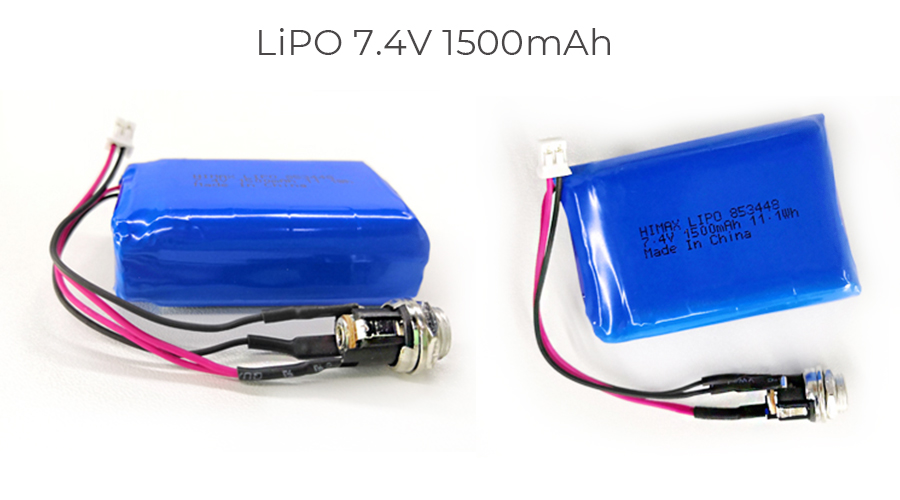
3. How to Choose the Perfect 7.4V Battery for Your Project
Every application is unique, but these universal considerations will help you narrow down your choice:
3.1 Determine Your Capacity (mAh) Needs
· Short bursts + light load (<1A): A 600mAh–900mAh battery may suffice (e.g., nano drones, small sensors).
· Moderate continuous draw (1–3A): Opt for a 900mAh–1300mAh pack (e.g., mid-range RC vehicles, FPV goggles).
· Extended runtime + higher load (>3A): Go for 1300mAh–3600mAh (e.g., pro-level drones, portable medical, robotics).
Quick tip:
Multiply your device’s average current draw (in amps) by the desired runtime (in hours) to estimate mAh:
> Desired runtime (h) × Current draw (A) = mAh needed.
3.2 Discharge Rate (C-Rating) & Performance
· A “C-rating” of 10C means the battery can deliver a current equal to 10× its capacity (so a 1000mAh 10C LiPo can discharge at 10A continuously).
· If your device occasionally demands short spikes (e.g., a brushless motor starting), ensure the pack’s burst rating (e.g., 15C–20C) can handle that.
· For applications where you simply need steady power (forty-minute LED runs), a lower C-rating (3C–5C) may suffice, unlocking higher capacity at lower cost.
3.3 Physical Dimensions & Weight Constraints
· Space matters: Pouch-style 7.4V LiPos come in myriad shapes—Himax can tailor them to fit awkward form factors.
· Weight distribution: In drones or mobile robots, even 20g can affect flight characteristics. Go for the smallest profile that still meets your runtime needs.
3.4 Connector Type & Wiring
· Standard 2S LiPo packs often come with JST-PH balance connectors (six-pin for 2S) and a main discharge connector (e.g., XT30, JST-SM, 2-pin JST).
· If your project requires a non-standard connector (e.g., Molex PicoBlade, SMBus, or a custom harness), Himax can prewire it—no soldering on your end.
3.5 Integrated Protection & BMS
· While many small LiPo packs rely on external balance chargers for safety, if your application is unattended (e.g., remote sensor node), an internal BMS with over-current, over-voltage, and over-temperature protection is crucial.
· Discuss with Himax whether you need a simple PCB or a more advanced smart BMS (with Bluetooth/CANBus telemetry).
4. Why DIY Builders & Industry Pros Love 7.4V LiPo Batteries
Beyond raw specs, there’s a human side to battery choice. Here’s what truly sets a high-quality 7.4V battery apart for designers, engineers, and hobbyists:
4.1 Seamless Integration: “It Just Works”
· No surprise sag: A 7.4V LiPo will stay above 7.2V under typical loads, whereas NiMH or cheap SLA packs may drop to 6V or lower. That stable voltage means fewer headaches when matching regulators or motor controllers.
· Plug-and-play shape: Instead of cobbling together AA cells or wrestling with a bulky rectangular box, LiPo pouches slide into custom slots—cleaner layouts, fewer stranded wires.
Himax insider note:
We once had a client trying to retrofit a medical pump designed for a lead-acid “brick” style battery. The conversion to a 7.4V LiPo involved redesigning the housing, but within a half-day of CAD revisions, they had a sleek, 60% smaller battery pack that boosted patient comfort and reduced shipping costs.
4.2 Extended Cycle Life: Save Money Over Time
· A typical 7.4V 1300mAh 15C LiPo can deliver 500–800 cycles at moderate discharge rates before dropping to 80% capacity. Compare that to a NiMH pack, which might only yield 200–300 cycles under similar stress.
· For IoT or remote installs, each battery swap could mean a service trip—LiPo’s longevity keeps teams from trekking into the field every few months.
4.3 Customization: One-Size Doesn’t Fit All
· Need a 7.4V 950mAh pack that’s exactly 3mm thinner to fit under a PCB? Or a 7.4V 1500mAh shape that wraps around an internal fan duct? Because LiPo cells are essentially flexible pouches, a little silicone jigging can yield almost any dimension.
· Want two parallel 2S packs inside a single shell? No problem—Himax can laminate them together, include a single BMS for both, and add a custom discharge plug. It’s your design; we simply make it real.
4.4 Safety & Compliance: Trust but Verify
· UL Listing & UN38.3 Shipping: Our 7.4V LiPo cells are tested to meet UN38.3 transport regulations. For industrial clients needing global distribution, that peace of mind is non-negotiable.
· Enhanced Protections: We offer options with internal PTC (Positive Temperature Coefficient) fuses and over-discharge cutoff. When you combine that with a reliable BMS, the risk of thermal runaway or catastrophic failure plummets.
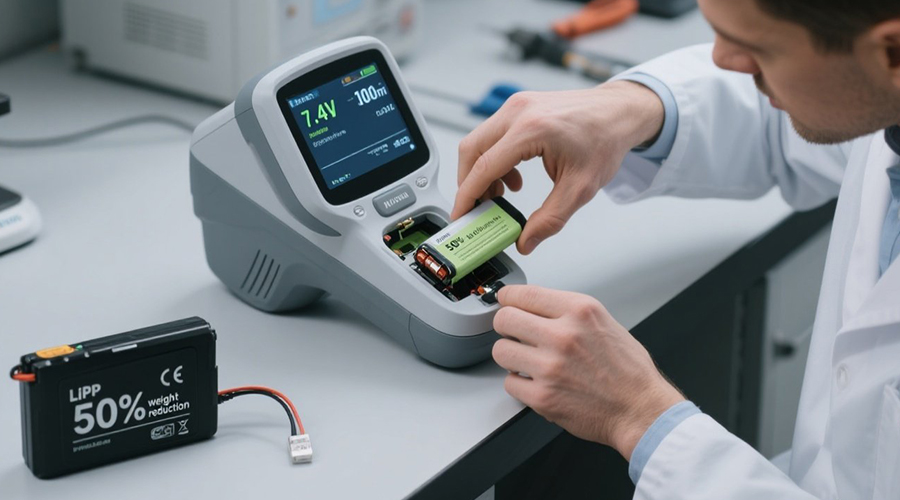
5. Spotlight on Himax’s 7.4V Battery Customization Services
Himax Battery isn’t just another LiPo vendor. We’re obsessed with making every pack feel like it was born to solve your exact problem. Here’s how we stand apart:
5.1 In-House Engineering & Rapid Prototyping
1. Mechanical Fit Analysis
Send us a 3D model of your gadget, tooling, or enclosure. We’ll drop in a virtual 7.4V pack, iterate until it’s snug, and produce rapid prototypes in 1–2 weeks. No more guesswork on thickness, length, or connector placement.
- Electrical Simulation & BMS Integration
We run SPICE-level simulations to ensure your custom 7.4V battery won’t dip below critical voltages under expected loads. If you need a temperature-compensated charge profile, our embedded BMS team can design a circuit that keeps your pack balanced and healthy.
- Material Selection
From high-tear-strength Lexan pouches to thin-film balance leads, we choose materials that withstand your use-case—be it underwater drones, wearable electronics, or hot-swap military gear.
5.2 Volume Production & Quality Control
1. Consistent Cell Matching
Before we weld tabs, we sort every cell for internal resistance (±2mΩ max variance) and capacity (±3% max variance). That means when you assemble two parallel 7.4V 900mAh cells, they age at the same rate and share current equally.
- Automated Spot-Welding & Laser Welding
Whether it’s a 10A discharge connector or a 20A high-current busbar, our laser-welding rigs create uniform, low-resistance joints. That’s one more failure point eliminated.
- Environmental & Safety Testing
Every 7.4V LiPo pack goes through:
§ Thermal Shock Cycling: –20 °C → +60 °C for 10 cycles
§ Vibration & Shock: Half-sine impacts at 50g, 11ms pulses
§ Overcharge & Over-discharge: Controlled tests to trigger protective cutoffs
§ UN 38.3 Drop & Crush Tests: Ensuring safe transport
Only after passing do we integrate them into your final assemblies.
5.3 Tailored After-Sales: We’ve Got Your Back
1. Lifecycle Monitoring
Our optional “Himax Cloud BMS” lets you track voltage, current, and temperature across every 7.4V pack in the field. If one unit’s impedance drifts high, you’ll receive an email alert—no surprise downtime.
- Global Service Network
Whether your factory is in Germany, your test lab in California, or your end user in India, Himax maintains regional warehouses of spares. Drop us a line, and a replacement 7.4V pack ships in 24–48 hours.
- End-of-Life Recycling
When your 7.4V LiPo packs inevitably age after 500+ cycles, trading them in under our “Green Recall” program gets you a credit toward your next order. We handle the proper recycling (per EU Directive 2013/56/EU), so you can focus on innovation, not disposal.
6. Best Practices for Integrating a 7.4V Battery into Your Design
Once you’ve chosen or custom-designed a 7.4V battery, follow these guidelines to ensure peak performance, longevity, and safety:
6.1 Charging Protocols & Tools
1. Balance Charging
Always use a proper 2S LiPo balance charger that monitors each cell. The typical charge profile:
§ Constant Current (CC): 0.5C (e.g., 7.4V 1300mAh → ~650mA) until pack reaches ~8.4V.
§ Constant Voltage (CV): Hold at 8.4V until current tapers to ~0.05C (~65mA).
§ Balance Phase: Chargers will top off the weaker cell until both reach 4.2V.
- Avoid Cheap USB “LiPo” Chargers
Many off-the-shelf USB adapters don’t truly balance both cells—they float the pack at 8.4V without matching cell voltages. Over time, you’ll develop cell imbalance that shortens life.
- On-Board Charging Considerations
If embedding a charging circuit, implement cell-voltage sensing on both cells and a regulated CC/CV converter. Include thermal sensing (NTC thermistor) to reduce charge voltage slightly when hot (e.g., 4.15V/cell at >45 °C).
6.2 Discharge & Load Management
1. Calculate Your Current Draw
If your device peaks at 10A bursts, choose a 15C-rated 1300mAh LiPo rather than a 5C 3600mAh pack—despite the higher capacity, a 5C cell can only safely deliver 18A, while the 15C one can go up to 19.5A.
- Use a Proper Rated ESC or Load Switch
For RC applications, match your ESC’s continuous current rating to at least 80% of your battery’s C-rated maximum. For electronics, ensure your power regulators can handle the peak current while dropping only a small voltage to keep your 7.4V bus clean.
- Monitor Under-Voltage
Most LiPo users set a 3.0V cutoff per cell (6.0V pack). If your design can’t tolerate brownouts, include a voltage watcher that disconnects the load at 6.5V to preserve battery health.
6.3 Mechanical & Thermal Considerations
1. Thermal Adhesive & Vibration Dampening
For drones or mobile robots, apply thin strips of thermal adhesive tape between cells and use anti-vibration foam. Minimizing movement inside the pack reduces micro-fractures that degrade capacity.
- Enclosure Ventilation
While LiPo cells don’t “vent” frequently, a sealed box can trap heat. In applications with sustained >2C discharge, allow at least 5 mm of airflow around each pack. A small fan or heat-sink plate can extend runtime and throttle risk.
- Waterproofing & IP Rating
If using your 7.4V battery outdoors (e.g., action cameras, portable sensors), ensure the enclosure meets at least IP54. You can do so by adding rubber gaskets around seams and using IP67-rated cable glands for wiring.
7. Common Pitfalls & How to Avoid Them
Even seasoned engineers sometimes make mistakes when integrating a 7.4V battery. Here are a few frequent missteps and how to sidestep them:
7.1 Ignoring Cell Imbalance Over Time
· Pitfall: Charging only via the main leads (no balance tap) leaves one cell at 4.2V and the other drifting to 3.9V after a few cycles.
· Fix: Insist on a charger that actively balances each cell every charge. For BMS-equipped packs, set balance thresholds at ±0.01V so small differences don’t compound.
7.2 Overlooking Peak Current Demands
· Pitfall: Specifying a 7.4V 2000mAh 5C pack for an RC plane with peak 15A draw results in severe voltage sag under load.
· Fix: Calculate worst-case peak draw (in amps) and select a battery whose C-rating comfortably exceeds that. If your plane draws 15A max, aim for a pack with at least 15C @ 1300mAh (i.e., ~19.5A capability).
7.3 Misplacing Temperature Sensors
· Pitfall: Surface-mount thermistors glued to the pouch can read 5–10 °C lower than internal cell temperature during high-current use, causing overcharge or under-charge.
· Fix: Place sensors between cell tabs or use an internal temperature pad. If you can’t embed sensors, adhere them to high-mass metal tabs rather than the pouch surface.
7.4 Underestimating Aging & Storage Conditions
· Pitfall: Leaving a 7.4V LiPo at 8.4V for months yields rapid capacity fade.
· Fix: Store at 3.8–3.9V per cell (7.6–7.8V pack). If your system goes dormant, schedule a quarterly “top-off” charge or enable a low-self-discharge mode in your BMS.
8. Why Himax Battery Is Your 7.4V Partner of Choice
By now, you’ve seen the many nuances of selecting and implementing a 7.4V battery—capacity, C-rating, connectors, BMS considerations, and more. Here’s how Himax ensures you get it right, every time:
8.1 Real People, Real Engineering
· Dedicated Project Managers: From first inquiry to ongoing field support, you’ll have a single point of contact who knows your 7.4V battery specs inside and out.
· Hands-on Prototyping: We schedule iterative samplings so you can hold and test the pack in your hardware before committing to production.
8.2 Transparent Testing & Certification
· UN38.3 & CE/RoHS: Every 7.4V LiPo we build meets or exceeds international safety standards—essential if you ship globally.
· Batch Traceability: Barcodes on each cell let us trace manufacturing date, internal resistance, capacity, and QC results—critical for long-term reliability studies.
8.3 One-Stop Customization Shop
· Form Factor Freedom: Whether you need a wafer-thin 7.4V 600mAh pack to slip into a wearable or a 7.4V 3600mAh module for rugged industrial gear, we’ll tailor the pouch dimensions, tab locations, and connector style.
· Advanced BMS Options: Simple one-chip boards for hobby builds or fully featured smart BMS with CANBus reporting for automotive/industrial projects.
· Flexible Pricing & MOQ: We accommodate low-volume prototyping (as few as 50 packs) and scale up to tens of thousands annually—without sacrificing per-unit attention.
8.4 End-to-End After-Sales Support
· Global Warehousing: Regional stock in Asia, North America, and Europe slashes lead times for replacement packs.
· Technical Hotline: A dedicated engineer is on standby to answer wiring questions, interpret BMS logs, or discuss unforeseen field issues.
· Recycling & Buy-Back Programs: When a pack’s life is over (around 500–800 cycles at 80% DoD), we’ll buy it back, salvage any usable cells, and arrange safe disposal.
9. Frequently Asked Questions (FAQ)
1. “Is a 7.4V 900mAh 15C LiPo enough for an autonomous ground robot that draws 7A continuously?”
Answer:
A 900mAh 15C (13.5A max) pack can sustain 7A continuous discharge, but capacity will drop faster than lower-C packs. Expect roughly 0.9Ah / 7A ≈ 0.13 hours (8 minutes) of runtime at full draw. For continuous 7A operation, a 7.4V 1300mAh 15C pack (19.5A burst capability) might be a safer choice—allowing ~11 minutes runtime with less stress on the cells. If you need longer runtime, consider a 7.4V 3600mAh 5C pack, which handles a 7A draw (≈2C) more comfortably, yielding about 30 minutes.
2. “Can I parallel two 7.4V 1300mAh LiPo packs to get 2600mAh? Any caution?”
Answer:
Yes, paralleling identical packs (same capacity, same C-rating, same manufacturer batch) is common. However:
- Balance Cells First: Ensure both packs are at the same voltage (±0.01V) before paralleling, or a surge current will flow between packs.
- Single BMS/Charger: Use a BMS designed for parallel packs or ensure each pack has its own BMS. For charging, treat the parallel combination as a single 7.4V 2600mAh pack—charge at 2.6A (1C for combined capacity) in CC/CV mode.
- Temperature Matching: If you run them in different temperature zones, cell aging can drift—balance-charge monthly to keep them aligned.
3. “What happens if I draw more than the pack’s C-rating? Say 25A from a 15C 1300mAh LiPo?”
Answer:
Drawing beyond the C-rating (20A max for a 15C 1300mAh pack) forces each cell to source more current than designed. Consequences include:
· Voltage Sag: The cell’s voltage drops steeply, causing your device to brown out or behave erratically.
· Excess Heat: Internal resistance multiplied by current squared (I²R losses) generates heat. Over-pulling can cause cell temps to exceed safe limits, risking chemical degradation or venting.
· Accelerated Aging: Higher stress currents shorten cycle life dramatically. A cell rated for 500 cycles at 1C might see only 100 cycles if consistently abused at 20A+.
Always match your peak draw to the pack’s burst rating, and ideally stay below 80% of that for longevity.
4. “My device’s input is 8.2V–5V stepping down. Is a 7.4V battery safe, or do I need a 1S LiPo (3.7V)?”
Answer:
If your device has an onboard buck converter that accepts up to 8.4V, a 7.4V battery is ideal—no extra regulators needed. If, however, the electronics expect 5V directly (USB power, etc.), you’ll need a DC-DC step-down converter anyway. In that case:
· Option A: Use a 7.4V pack plus a 5V buck converter (95% efficient) to supply the 5V rail.
· Option B: Switch to a 1S 3.7V LiPo with a boost converter to 5V. This can be less efficient and may struggle if your load occasionally spikes above what a single cell can handle.
Typically, 7.4V packs are the more robust choice when you can accommodate a small regulator stage.
5. “How do I store my 7.4V LiPo for months without cycle usage?”
Answer:
· 50% State of Charge (SoC): Store at ~3.85V per cell (7.7V pack) for minimal stress.
· Cool, Dry Place: 15 °C–25 °C is ideal. LiPos degrade faster above 40 °C or below 0 °C.
· Recharge Every 3–4 Months: Top up to 3.85V per cell to prevent over-discharge.
· Disconnect Before Storage: Remove any load wires or switch off the BMS to avoid parasitic drains.
Following these steps, your 7.4V battery should retain >95% capacity even after six months.
10. Conclusion: Empower Your Next Project with a Superior 7.4V Battery
From cinema-quality brushless gimbals to rugged field data loggers, the humble 7.4V battery powers a surprising array of modern devices. But not all 7.4V packs are equal. Whether you need a nimble 600mAh drone pack, a balanced 900mAh wearable power source, a high-pulse 1300mAh racer’s LiPo, or a marathon-run 3600mAh workhorse, investing in thoughtfully engineered 7.4V LiPo cells makes all the difference.
At Himax Battery, we combine cutting-edge cell chemistry, pristine manufacturing, and hands-on customization to deliver 7.4V batteries that fit your exact needs—no compromises. Each pack is hand-matched for internal resistance, fitted with a BMS that protects against extremes, and tested to global safety standards. That means you spend less time troubleshooting power woes and more time innovating.
Ready to find your perfect 7.4V battery solution? Reach out to Himax Battery today for a free consultation and custom quote. Let’s collaborate to design a power pack that elevates your project—whether it’s the next high-performance FPV drone, a life-saving medical device, or an industrial IoT node way out in the field.
Because when it comes to powering tomorrow’s marvels, a reliable 7.4V battery isn’t just nice to have—it’s non-negotiable.
About Himax Battery
Himax Battery has been at the forefront of lithium energy solutions for over 18 years. Specializing in LiPo and LiFePO4 technologies, we design, test, and deliver custom battery packs worldwide—each one tailored for maximum safety, longevity, and performance. From rapid prototyping to high-volume production, our team is here to power your vision.
Contact us:
www.himaxbattery.com
✉️ services@himaxelectronics.com
Let’s build the future—one 7.4V battery at a time.


